Scenario 1: Requesting for Teleport-based DES
-
Teleport is a storage device customized by Huawei for TB- or PB-scale data migration.
-
Teleport-based DES is a data transmission mode of DES.
-
This document uses the data migration of a technology company as an example to describe how to use the Teleport-based DES.
Step 1: Creating a Bucket
1. Log in to HUAWEI CLOUD console. Choose Storage > Object Storage Service.
2. On OBS Console, click Create Bucket.
3. Configure basic information for the bucket.

Note
1. Before creating a DES order, create a bucket on OBS.
2. User data is stored in OBS buckets.
1
Selecting Object Storage Service.
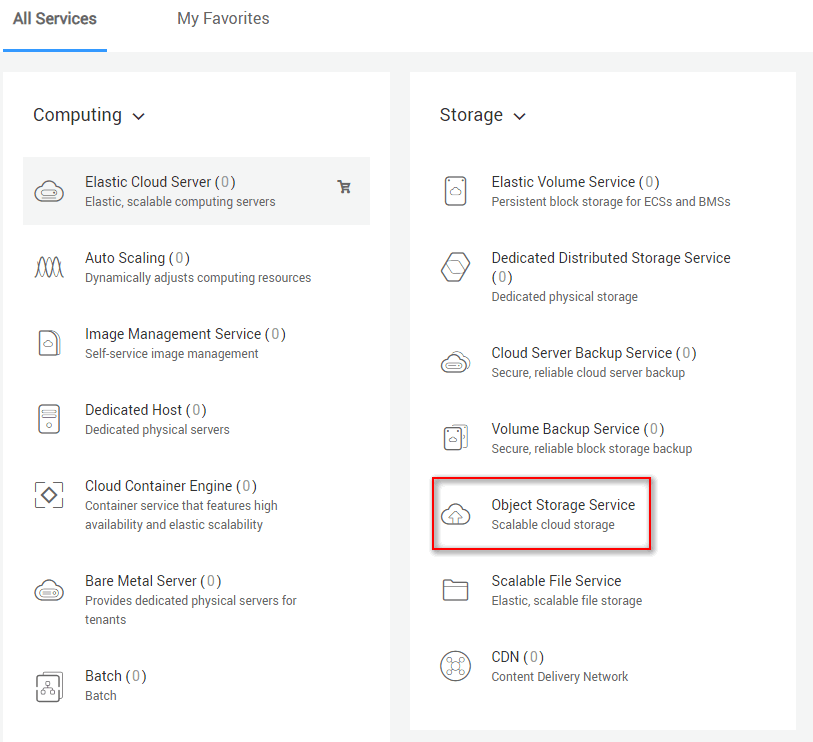
2
Clicking Create Bucket.

3
Configuring bucket basic information.
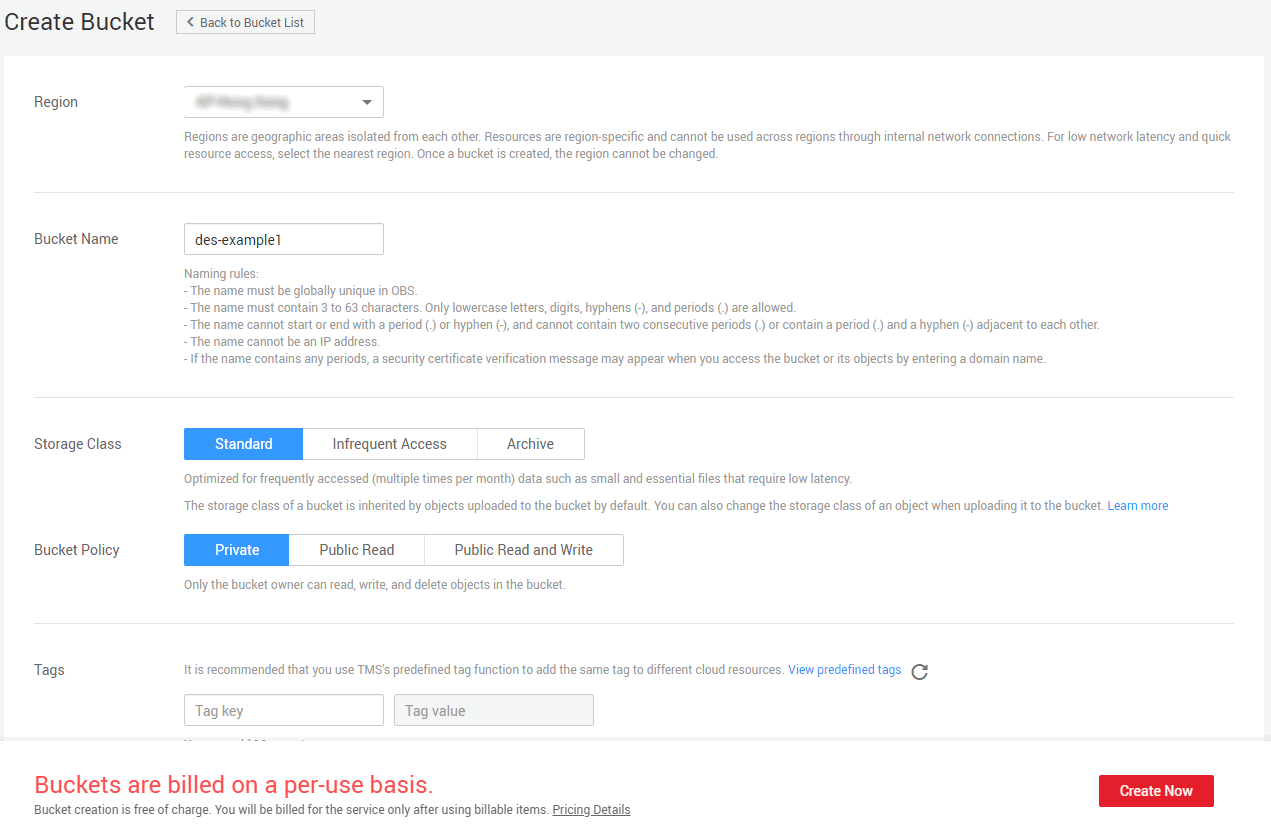

View Image
Step 2.1: Requesting for Teleport-based DES
1. Log in to HUAWEI CLOUD console. Choose Storage > Data Express Service.
2. Select Data Center from the drop-down list on the top menu bar.
3. Click Buy DES.

Note
Before using DES, top up the account and subscribe to DES.
1
Clicking Buy DES.


View Image
Step 2.2: Setting Transmission Information
1. Select Import and By Teleport and specify the transmission information and contact information.
2. Click Buy Now.

Note
1. (Optional) Teleport File: specifies the name of the folder to be copied to the root directory of the Teleport. Data in this folder will all be transmitted to the specified destination bucket or directory. If this parameter is not specified, all data is copied to one destination bucket. In this example, customer data is stored in the test-folder1 and test-folder2 folders. Therefore, the customer needs to click Add to add a row.
2. Destination Bucket: specifies the bucket to which data is transmitted. If a destination bucket does not exist, click Create Bucket to create one. Try again after the bucket is created.
3. (Optional) Import Directory: specifies the directory for storing data to be transferred to the destination bucket. If this parameter is not specified, user data is directly imported to the destination bucket.
4. Add Delivery Address: To create a new address, you need to enter information including the Contact, Delivery Address, Address Details, Mobile Number, and SMS Verification Code.
1
Setting transmission information.
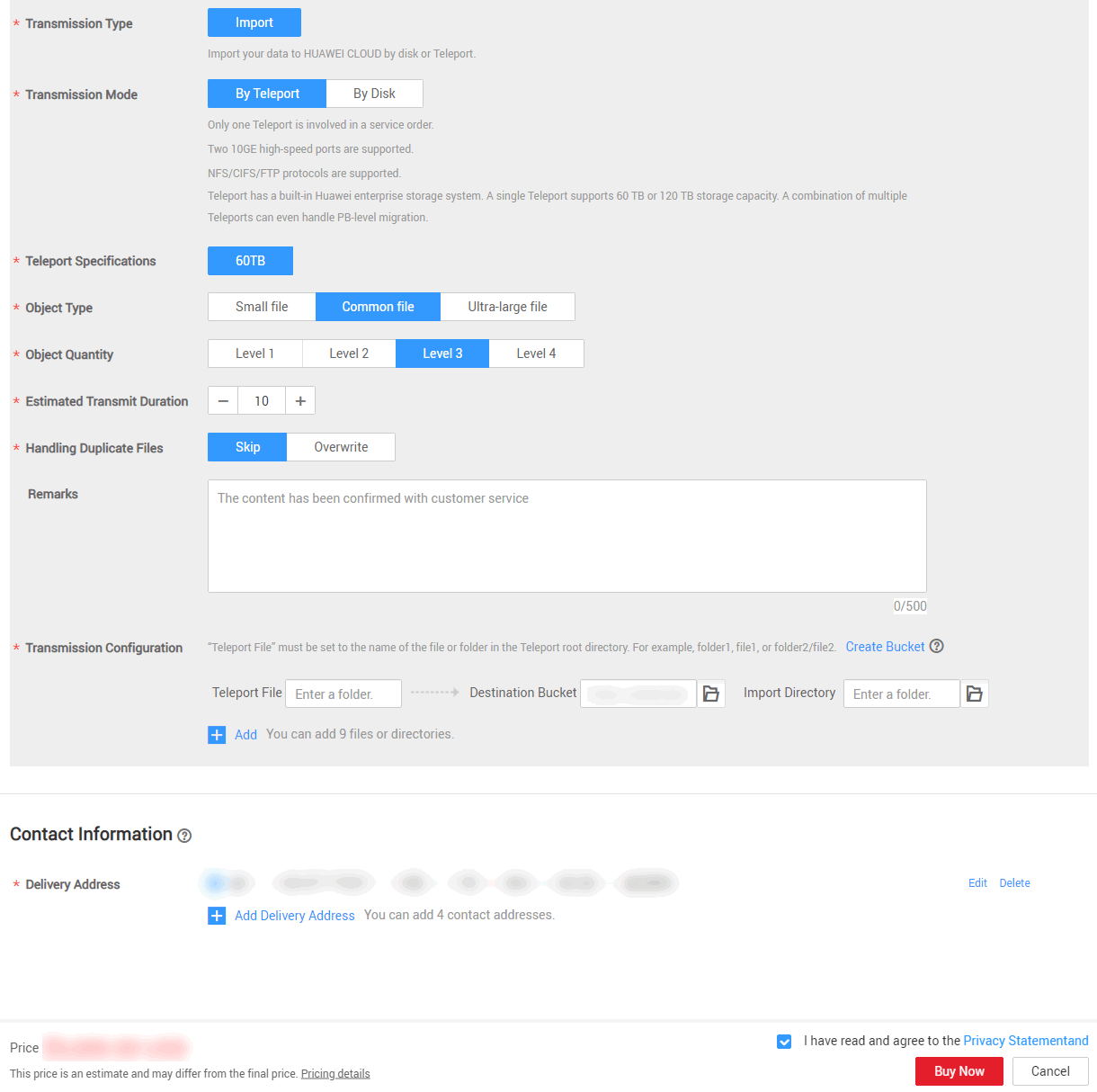

View Image
Step 2.3: Submitting the Application After Confirming the Configuration Information
After confirming that the service order details are correct, click Buy Now to submit the service order. If information under Order Details is incorrect, you can click Previous to modify order information, and then return to the order detail page and click Submit.
1
Confirming configuration information.


View Image
Step 2.4: Confirming Successful Service Order Submission
1. A message is displayed, indicating that the service order is submitted successfully.
2. You can also view the service order status by clicking View Service Order List.

Note
1. After a service order is created successfully, the status of the service order is Order under review. In different operation phases, the service order may be in different states. Click here to view the detailed service order statuses.
2. When the service order is in the Order under review state, you can modify, cancel, or delete the service order by selecting corresponding options under More in the Operation column.
1
Successful service order submission.

2
Viewing service order list.


View Image
Step 2.5: Downloading the Signature File
You can download the signature file on the page indicating that the order is submitted successfully or on the service order list.

Note
A signature file is the unique identifier of the Teleport in the service order, ensuring that data in the Teleport can be uploaded as instructed in the corresponding order. After downloading a signature file, save it to the root directory of the Teleport.
1
Downloading the signature file.


View Image
Step 3: Receiving and Copying Data to the Teleport
1. Unpack the device.
2. Connect cables and Power on the device.
3. Copy data.
4. Power off and pack the device.

Note
1. After the service order submitted by the customer is approved, the Teleport will be received soon. After receiving the Teleport, the customer needs to perform the preceding five steps to copy local data to the Teleport.
2. After data is copied, the customer needs to download and import the signature file to the root directory of the Teleport shared file system.
1
Receiving and copying data to the teleport.
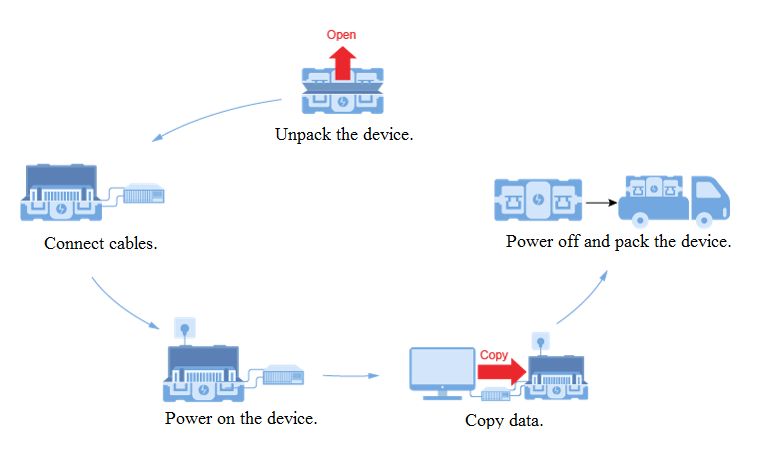

View Image
Step 4: Mailing the Teleport to a Huawei DC
In the service list, click the order ID and check the DC Address, DC Contact, and DC Phone Number in Service Order Details, and mail the Teleport.
1
Checking the mailing address.
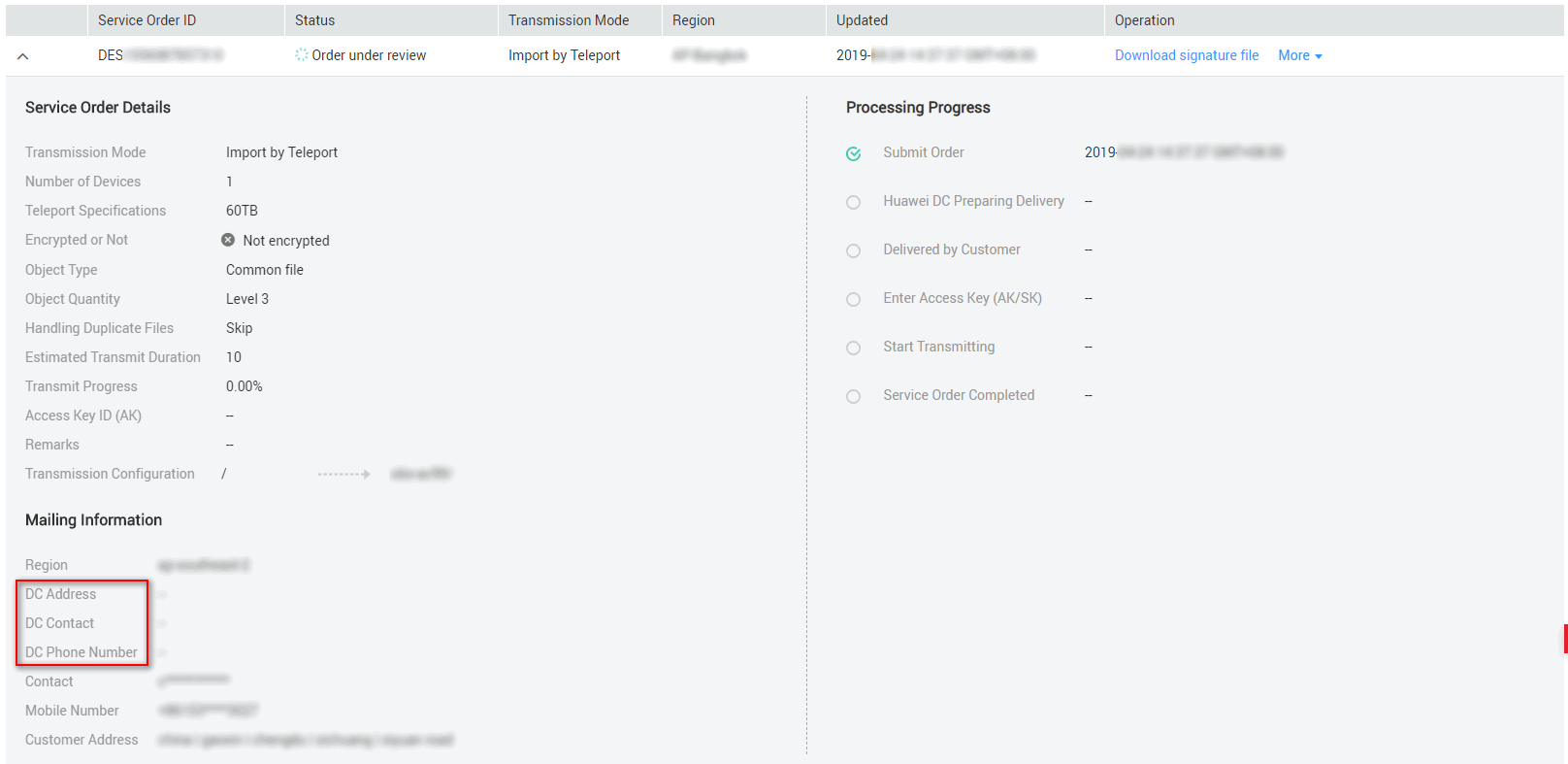

View Image
Step 5: Starting Data Transmission
1. Log in to DES Console.
2. Click Enter access key (AK/SK) under More in the Operation column of the service order.
3. In the dialog box that is displayed, enter the access key (AK/SK).

Note
If you do not have any AK/SK, click the username in the upper right corner of the homepage of the management console, and click My Credentials in the drop-down list. On the My Credentials page that is displayed, click Add Access Key in the lower part of the Manage Access Key tab page.
1
Entering the access key (AK/SK)-01.

2
Entering the access key (AK/SK)-02.
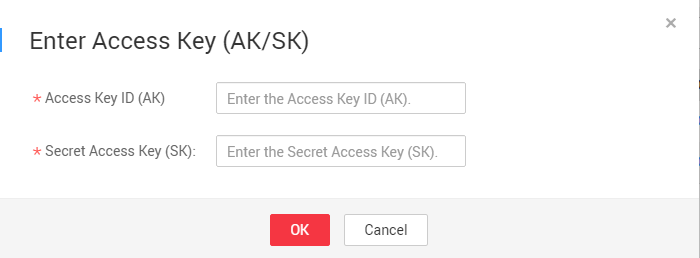

View Image
Step 6: Viewing Data Transmission Results
1. Log in to DES Console.
2. Find the order in Service order completed, click Download Transmission Report under More in the Operation column of the order.
3. View the report and check whether all data is transmitted successfully.

Note
After data transmission is complete, you can also view data transmission results on OBS Console.
1. Log in to OBS Console.
2. Click the name of the bucket that stores the target data. On the Summary page that is displayed, you can view the total storage capacity and object quantity of the current bucket.
3. Click Object and view all uploaded objects in the object list.
1
Viewing the data transmission result.


View Image
Feedback
Was this page helpful?
Provide feedbackThank you very much for your feedback. We will continue working to improve the documentation.See the reply and handling status in My Cloud VOC.
For any further questions, feel free to contact us through the chatbot.
Chatbot





